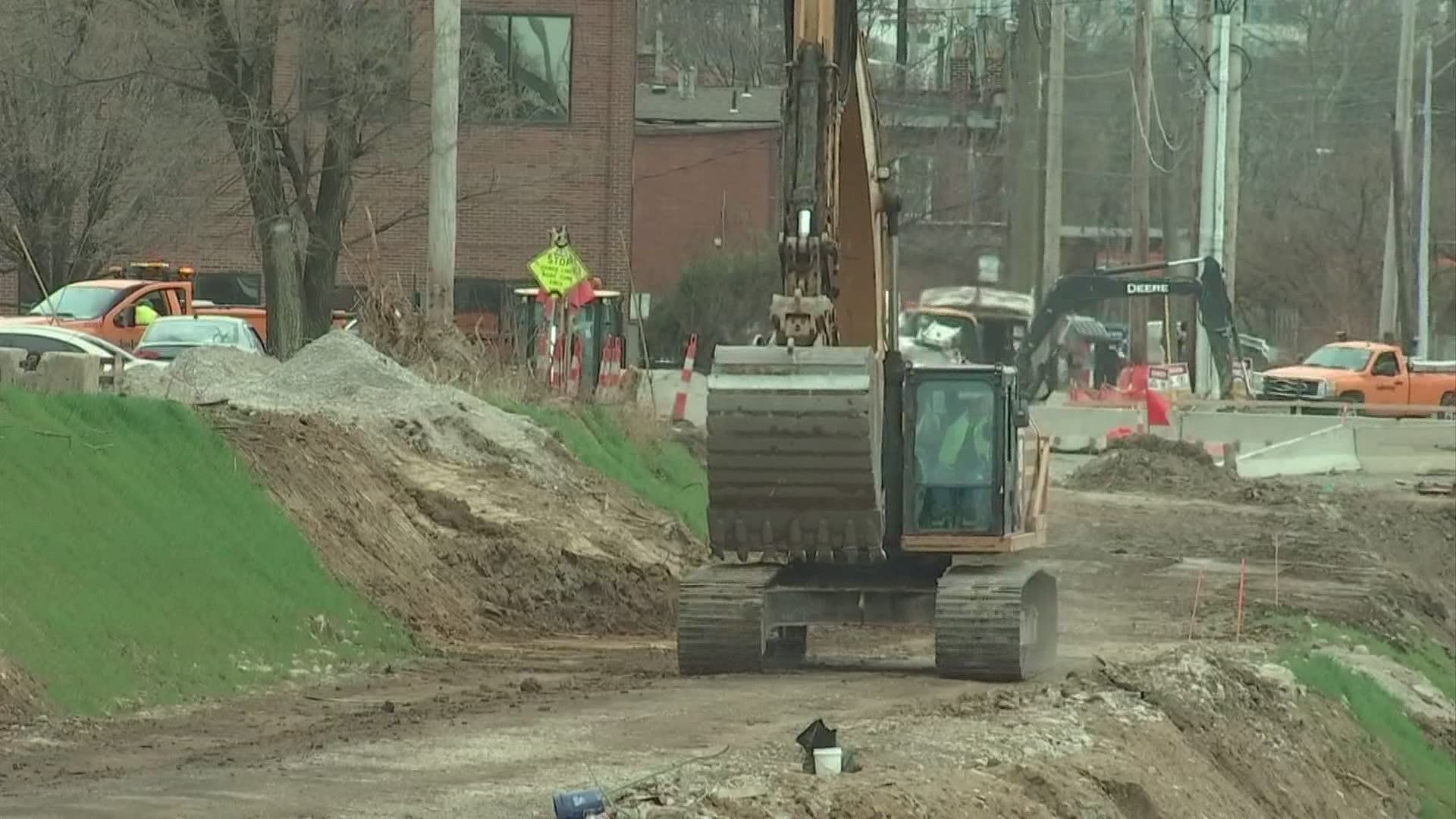COLUMBUS, Ohio — The relationship between highways and neighborhoods has historically been a strained one. That is certainly true in the Columbus area.
“In Columbus, you have about 40 miles of interstate – 670, 71 and 70 – that are within the outer belt. Almost all of them go through Black and poor communities,” said ODOT Director Jack Marchbanks. “In the early 60s, here in the central Ohio area, Columbus, these communities lacked the political power to know what was happening, and they lacked the access to decision-makers.”
That led to highways slicing through neighborhoods, including Mount Vernon, Hanford Village and King-Lincoln Bronzeville.
“It’s an ugly legacy, but I want to say one thing, and one thing is that, we can’t undo the past, but we can work to mitigate it,” Marchbanks said. “One thing that the DeWine-Husted Administration is absolutely committed to is environmental justice and reconnecting communities to environmental opportunity. The Ohio Department of Transportation is not the Ohio Department of Highways, and we are working with communities to mitigate some of those impacts and to lessen that legacy.”
That means engaging stakeholders throughout the process when it comes to new construction projects. Columbus already has some examples of that input leading to action, including the High Street Cap Project over I-670 and the Long Street Cultural Bridge.
“That’s really where this project was born out of was the thoughts from the community about kind of honoring the past but really bringing those community connections back,” said ODOT District 6 Deputy Director Lori Niese Duguid. “I think it’s really a phenomenal thing in our city that doesn’t really exist anywhere else, especially linked to a highway project.”
It’s part of a $1.4 billion plan with roughly 19 phases. Construction under that plan began several years ago and will likely continue for years to come.
“Safety is always our No. 1, and that is probably what started a lot of the highway improvements being needed but then bringing that into the communities and really talking to the communities about what they wanted and kind of righting those wrongs of the past that brought those connections back together,” Duguid said.
Current projects in the works include Broad Street and Fulton Street. The goal is to mitigate the impact on the neighborhoods as much as possible while keeping that community connection.
“We’re able to have those connections so that if you are going from one of the neighborhoods into downtown, you’re going back and forth, you don’t even know you’re crossing the highway,” Duguid said. “And yet, the highway is such a vital piece of our transportation network that it’s there, it needs to run through downtown, but really bringing those neighborhoods back, connecting them close together.
Plus, Marchbanks points out that, it’s more than just an ODOT goal to keep these communities intact as much as possible, there are now laws in place that were not there when the interstates were originally constructed.
“We have a National Environmental Policy Act, which basically insists on environmental justice,” he said. ‘You cannot even reconstruct an existing interstate without massive community involvement, without going to those community leaders, without going to the local government. And now, those same communities have representation on city council, they have representation in the mayor’s office, they have representation in county commissions"
Marchbanks says people who did not have power in the 1950s and 1960s now have a voice and will be listened to by their administration.
Click here for more information on current ODOT projects and to provide feedback.

